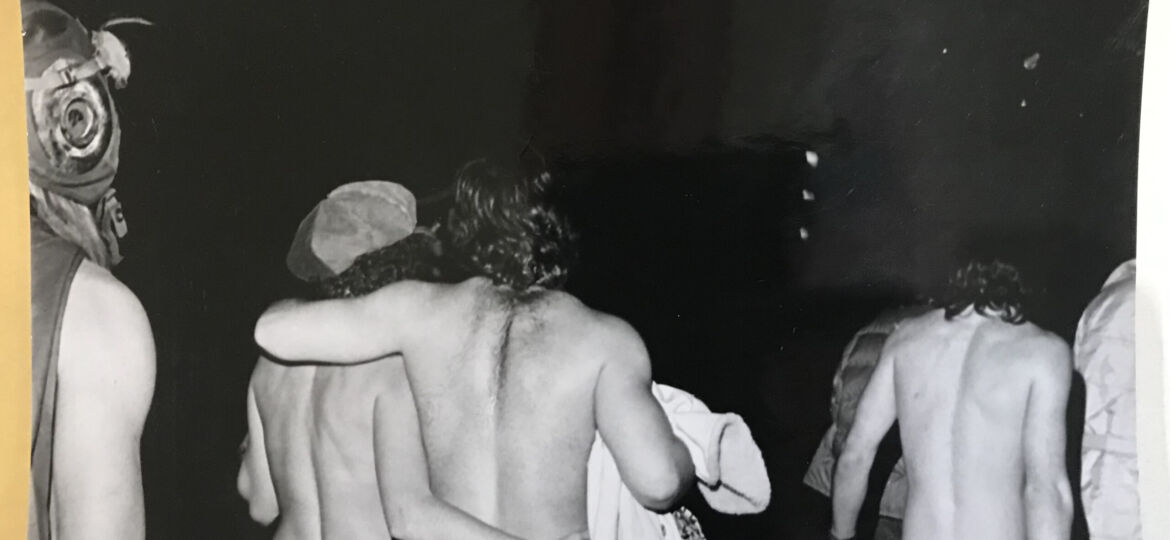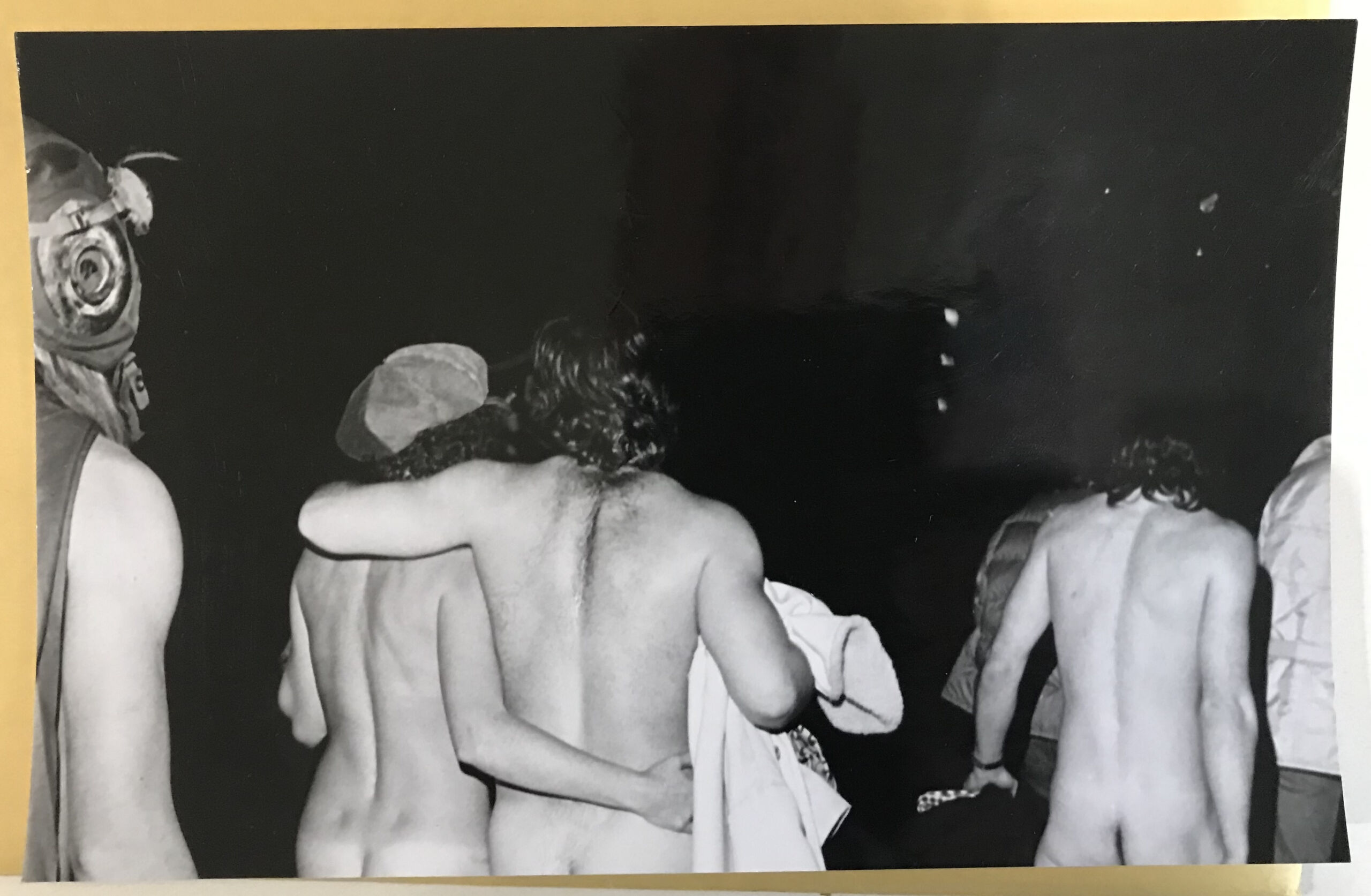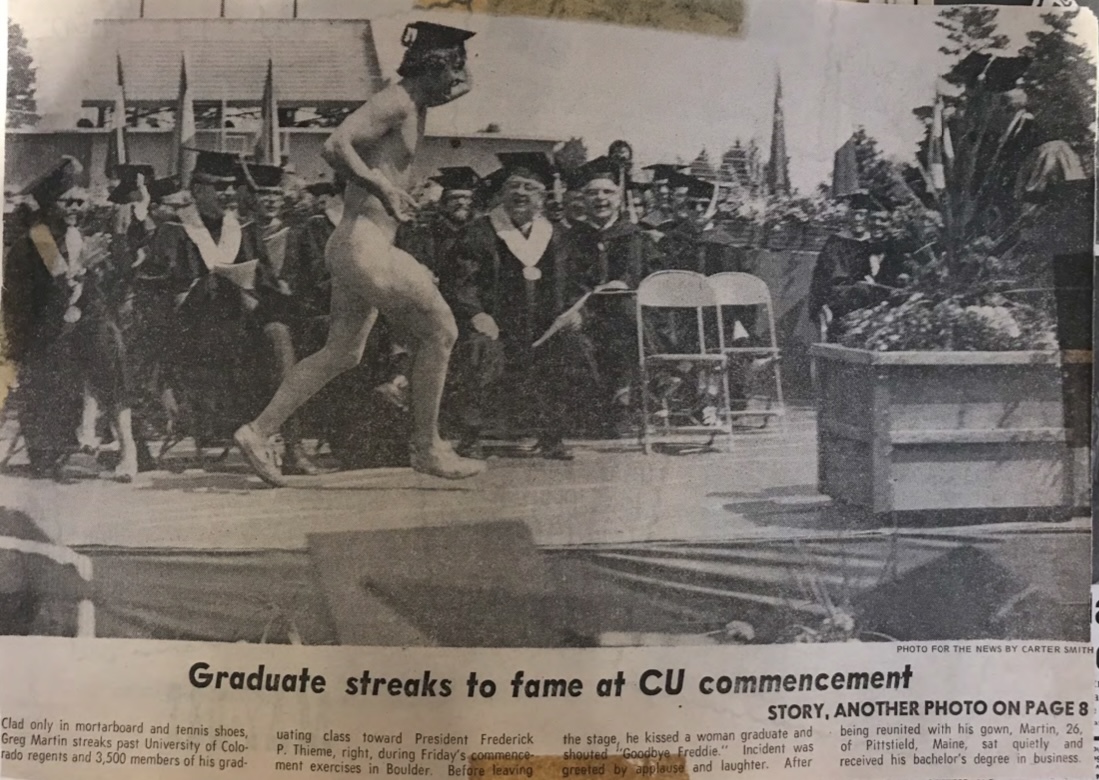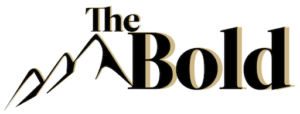
Buffs Unrobed: The History of Streaking at CU Boulder
By Cayden Stice
Fresh air and skin bare: that was how students at the University of Colorado Boulder liked it in 1974.

Coming off the mass political protests that took the CU campus by storm in the late 1960s to the early 1970s (which included parts of Macky Auditorium being bombed and arson attacks against ROTC rooms on campus as well as the Institute of Behavioral Science, among other facilities), students on campus found a new pastime: streaking.
For CU Boulder, the cause of streaking originated not on the campus itself, but with a group of vacationing students to Mexico in 1965. Fifteen CU students skirted police through the town of Mazatlán, with five of that group eventually being arrested and causing a moment of embarrassment for the University nearly 1,500 miles away. From that incident, a tradition arose.
An unknown author in 1974 laid witness to the streaking craze on CU’s campus. Sometime in April 1974, the first streakers were spotted in the Kittredge on-campus housing, running free around the center ponds. “A CU detective tackled one of the men, and in the process of arresting him aroused the anger of quite a few (perhaps 100) Kittredge residents,” wrote the author. The next week became a hullabaloo of activity, as students responded en masse, bare ass.
The night after this arrest, dozens of skin-clad students stood in front of Kittredge’s Andrews Hall, including one particularly obnoxious “J.R.” (the author only used this abbreviation to describe this character). As the ringleader of these skimpy shenanigans, J.R. led his fellow students to shuck their shirts and shorts, before diving into the Kittredge ponds. Yet with the low temperatures setting in, the revealing rendezvous soon wrapped up, but only for that evening. Over the following nights, these same antics persisted, much to the dismay of the author who wrote, “I was hopeful that Kittredge would not be a spot for streaking… [but] Kittredge has the perfect physical arrangements for streaking—the sidewalks along the pond serve as a perfect running track, and the many balconies are ideal for private viewing.”
Soon, the frisky festivities spread to Farrand Field, where only days after Kittredge became accustomed to its own naked frenzy, hundreds of streaking students kibitzed. Anywhere between 400 and 1,200 students participated, with the author carefully noting that many wore shoes, and some wore ski masks to preserve their public dignity. Cheering them on were many other students, as well as local residents, including Boulder families (the “weirdies” as the unknown author charged). Boulder police kept a hands-off approach, solely spectating to make sure the crowds were under control.
From Farrand Field, streakers continued dancing around CU’s campus: from the corner of Macky Auditorium and Old Main, back to the Kittredge neighborhood once again. These streakers continued their charades elsewhere in Boulder, with some reported on the University Hill. “Take it off!” became a mantra of the affairs. At other points, students quipped that if someone did not streak, “it means you support Nixon!”
Streaking continued on CU’s campus for the following years, albeit with greater variance in participation. Alum Aaron Clay, in a 2015 oral history interview housed at Boulder’s Carnegie Library, recounted how streaking had come to replace political protests on campus [01:13:29] – [01:15:20]. Where the early 1970s were engulfed with CU students raising protests against the Vietnam War, it seemed the bite of those protests morphed into the relaxed fun of nudity.
Alum Philip Lobel, in 2015 as well, recalled a similar shift: “As a matter of fact, the year that I started at CU, ironically it went from the year before—anti-war protests—to streaking, the year I was a freshman. And literally, we had thousands of people out of the dorms streaking naked across campus—like into the library and into the [student union building]—en masse! Streaking. That was the year that—somebody streaked the Oscars that year. People were streaking naked on football games. Streaking. So how dramatically it shifted politically from what I heard the year before I got there and two years before where professors would literally dismiss the class to join the protests that were happening against the [Vietnam] war on campus. ‘Class dismissed. Go protest!’ To now, we were streaking for fun.” [39:36] – [44:18].

In the same time as Kittredge and Farrand became inundated with streakers, other universities around the United States experienced similar tomfoolery. The students at Boulder were a part of a growing trend of seeing which campus could hold the world record for most gathered streakers. At Memphis State University in 1974, hundreds of streakers also flashed their campus. At the University of Missouri, 600 gathered in what became a momentary record for streaking attendance. Even prestigious institutions like Harvard, Columbia and Princeton were not immune from the craze.
While in 2021, most colleges are free of streaking campaigns, CU Boulder still maintains some remnants of this past (as seen here at Folsom Field in 2009). The annual Nearly Naked Mile, hosted by the CU Boulder Alumni Association, gives students yet another chance to strip down and run about the campus like previous generations of Buffs. For CU, being a Buff at times also means being in the buff.
***
To find more information and primary sources about the streaking chronicles at CU Boulder, contact or visit the CU Boulder Heritage Center, housed on the third floor of Old Main. Other information in this article was obtained from William E. Davis’s Glory Colorado! A History of the University of Colorado, 1963-2000.

